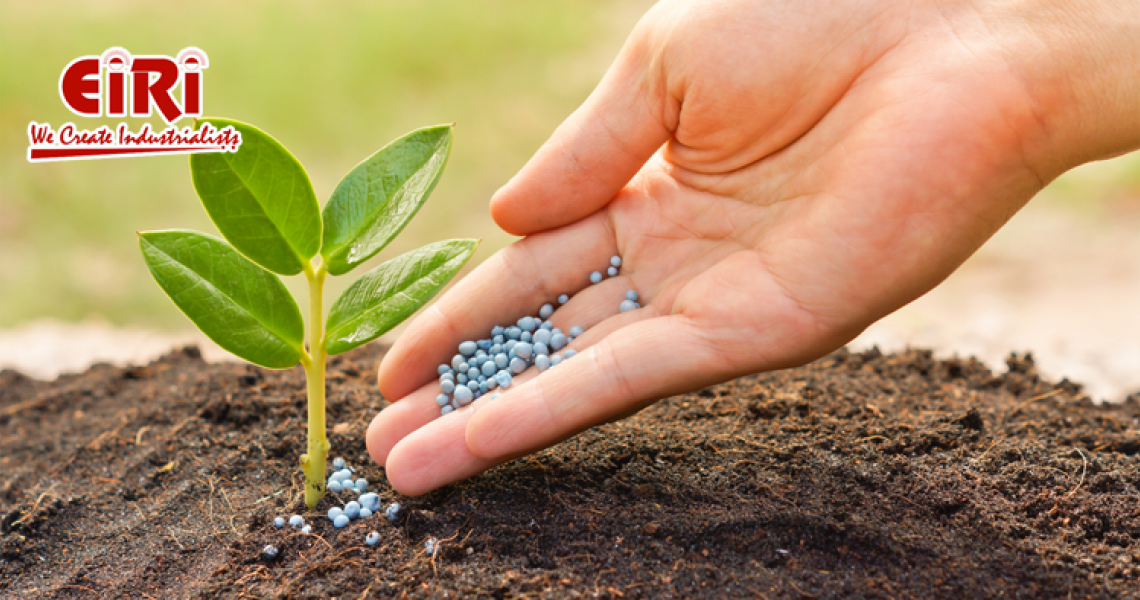Fertilizer Manufacturing Business

Fertilizers are plant food that helps farmers feed the rising population. Fertilizers replenish after each harvest with plenty of nutrients. Plants need essential nutrients to grow and survive. Natural or synthetic, a fertilizer enhances plant fertility and growth.
Organic and inorganic fertilizers provide nutrients to plants to ensure that plants are strong and healthy. Organic fertilizers develop a healthy growing environment, and inorganic fertilizers offer rapid nutrition. The benefit of inorganic fertilizers is faster than organic fertilizers. However, using fertilizers for the longer term results in soil depletion.
Industry Overview
Fertilizer manufacturing business with the growing population and changing dietary habits contribute to the fertilizer industry in developing nations. In 2020 the market size of fertilizers crossed USD 190 billion and is expected to show a CAGR of 2.6% between 2022 to 2030. The projection of market size records in volume as 2.4% CAGR.
Synthetic and natural fertilizer manufacturers use it on soil or plant tissues. It is a way to provide nutrients to plants required for their growth. Enhanced soil nutrients increase the need for increased crop yield, as the expectation in the forecast period is seeing an increase in demand. Organic fertilizer growing penetration encourages farmers to use them safely and efficiently the fertilizers.
The agricultural industry worldwide has several issues. The world population will surpass the expected numbers by 2050, and it is expected to exert more pressure on the agricultural manufacturing businesses. Already, the agriculture business is suffering from productivity loss. It is due to the agricultural field’s shrinkage and manpower shortages, owing to rapid urbanization. Farmers are compelled to enhance their output by using fertilizers, and it is because of the global loss of arable land.
Several non-government and government organizations are promoting awareness about the use of fertilizer and the favorable impact it has on the output of agriculture. The fertilizer market benefits from fertilizer promotion, no matter, if it is done through television, radio, online, or other centers.
The rising rural incomes, and the quick and ease of credit availability, will result in buying more fertilizers, favoring the fertilizer manufacturing business.
It will also boost revenue generation. However, there is a need for a good understanding of using fertilizers, and if not, they will have a harmful influence on human health and soil. Farmers overusing fertilizers boost their yield, while it is unsafe for the environment.
Dry fertilizers dominating the expansion of the market
The market size of dry fertilizers is anticipated 2030 to cross USD 200 billion. Granular or dry fertilizers are easy in storing and do not ask for any specific storage conditions. The majority of the time, they are at room temperature. Dry fertilizers are not suitable for storage in a cold environment.
Dry fertilizers are effective for intensive treatments of pre-planting. The dry fertilizers are in use as it features polymer-coated urea, and helps as they are slow-release processes. Besides, buying dry fertilizers in large quantities is favorable as it saves money. Agricultural production growth will increase further with the usage of dry fertilizers concentration in the future.
Organic fertilizers will go on an upward trajectory
The demand for organic fertilizers by 2030 will be around 11.5 million tons. Organic fertilizers are safe to use and are not concentrated. Thus, it is much better than inorganic fertilizers. It is non-toxic and environmentally safe. It is the best fertilizer for various crops and plants.
With the regular application of organic fertilizers, the soil's biological balance does not get disturbed or jeopardized. The usage of organic fertilizers improves soil fertility. The awareness about the environment and the negative consequences of using synthetic or inorganic fertilizers has been helpful to farmers, so they shifted to organic farming. The fertilizer manufacturing businesses and the market will show an increase in consumer demand and will benefit from organic agricultural product production and demand.
The fertilizer manufacturing segment will dominate the market and industry
The fertilizer industry is driven by the applications of fertilizer in agricultural activities, such as basic food crops and plant cultivation. The agricultural segment will certainly generate 2030 more than USD 100 billion.
The increasing demand for maize, rice, paddy, millet, wheat, and barley is steadily increasing in developed and developing economies. It will push in the coming years the fertilizer market. Therefore by 2030, the agriculture application will use fertilizers in agriculture areas so that the essential minerals such as phosphorous, nitrogen, and potassium present in the soil naturally replenish.
Asia Pacific will be the most lucrative
Dominating the fertilizer market will be Asia Pacific, and as per the timeframe, there will be a CAGR of 2.5% shortly. With the increasing demand from the growing population for enhanced production of food in India, China, Bangladesh, Vietnam, and Pakistan, the fertilizer market concentration is sure to increase in the coming years.
It is apparent as several countries are major agricultural product exporters reaching all over the world. The increase in government subsidies and FDI in the fertilizer sectors boosts the demand for regional products.










